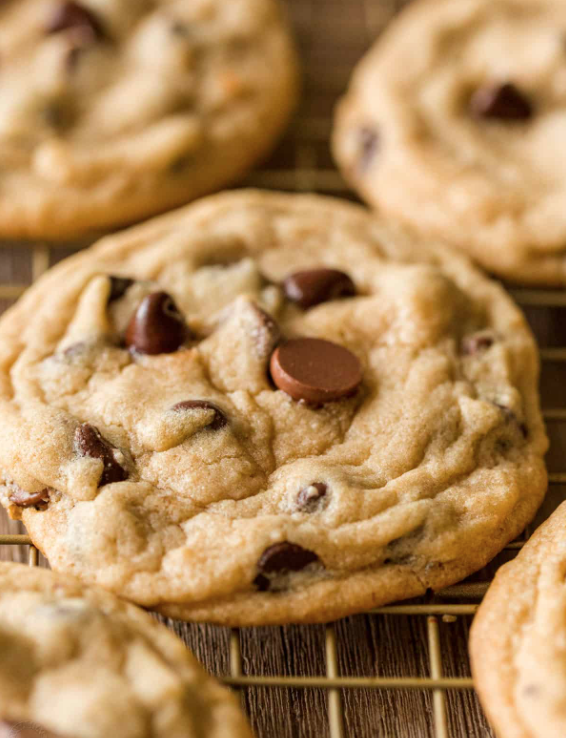By: Heidi Wagenbach
It’s the most wonderful time of the year…
December has finally arrived so the holiday season is definitely in the air, accompanying the bitter mornings and chill nights. With this, also comes the inevitable task of baking bread and pastries to indulge a bit over the next couple weeks for yourself and family. However, unlike cooking, baking is a much more precise process, and going just a tad over or under any ingredient can drastically change the texture, flavor, and appearance of your cookies. While the classic recipe for chocolate chip seems simple at first: baking soda, sugar, eggs, vanilla, flour, etc., there are actually minuscule moments that go into baking the perfect cookie. Anything from the temperature to substituting different ingredients (i.e. oil for butter) to how hot the oven is to mixing the wet and dry ingredients together all contribute to what the end result will be. Keep reading to find out how either too much or too little of a certain ingredient may alter how your cookies end up.
Sugar
We can all admit we’ve had some cooking or baking disasters over the years either by accidentally throwing in salt instead or your child purposely pouring five cups of sugar into the bowl, claiming they’re “helping you.” Speaking of sugar, did you know that granulated white sugar is hygroscopic, meaning that it absorbs the liquid in the dough? The gluten in the flour therefore has less time to develop and thus results in a flat, crisp, and lightly-colored cookie. On the flip side, brown sugar has molasses that adds moisture and chewiness to the dense cookie if you add this variation to your dough.
Butter
When melting butter, the water that’s released will dissolve the sugar (most recipes call for room-temperature butter) and end with a cookie that’s tender and flat. Mixing butter and sugar creates air pockets that make fluffier cookies, and by heating the butter too much, it eliminates that step.
Baking Powder/Soda
Baking powder and baking soda are often mistaken for the same thing and interchanged, but they shouldn’t. Baking powder has sodium bicarbonate and acidic salts. The cookie will become soft and thick, but slightly hard. There are two reactions when adding this ingredient: the first occurring in the raw dough, the second when they are baked in the oven. So you could prolong the baking as opposed to if you were to use soda, which creates a soft, fluffy cookie but needs to be baked immediately after mixing or the reaction will dissipate. Nonetheless, soda needs an acidic ingredient to act with (such as buttermilk).
Below is a visual that shows how your cookies will look for each scenario:

Rachel Askinasi’s Experiment
The journalist from Insider conducted her own at-home tests to see what would happen when ingredients are neglected or heavily added. Her findings are shown here:
- Mixing your batter too much can lead to runny cookies (when they’re baked, they become light/airy).
- Replacing baking soda with powder: chewy cookies that get stuck in your teeth (ugh).
- Too much flour equals a longer bake time and the cookies become super fluffy but dry.
- Not enough flour results in large, thin, and crispy cookies.
- All the ingredients in one bowl rather than mixing them separately means that you’ll be done sooner, which during these busy times seems appealing. The cookies will suffer in turn though, having a weird, bumpy texture filled with air bubbles.
- Forgetting eggs means you’ll get a dry, crumbly, and salty cookie.
- On the other hand, too much egg will conclude with a cake-like/spongy cookie.
- No sugar makes for a dry, bread-like, and puffed in the center cookie, similar to a scone, but softer.
- Too much butter… you guessed it, a buttery cookie (cake-y middle, brown edges, melt-in-your-mouth… anyone else drooling?)
- Too little butter makes the cookies shape into muffins where they puff upwards instead of outwards.
Conclusion:
I think it’s safe to say that as long as you follow the recipe and instructions correctly, your cookies will taste amazing. When making dinner, it’s easy to add a dash of this or that, but be methodical while baking this year, whether that be cookies, or cakes or pies, to ensure that the ending results will be what you want and not too dry or lacking flavor. (Or who knows, maybe you prefer your cookies crunchy… so maybe a tad less flour is what you crave!)
~Happy Holidays from Classic Cooking Academy!~
Sources:
The Chemistry of Baking Cookies
6 Ingredients That Affect Your Cookies
Photos Show How Common Baking Mistakes Can Drastically Change Your Chocolate Chip Cookies

